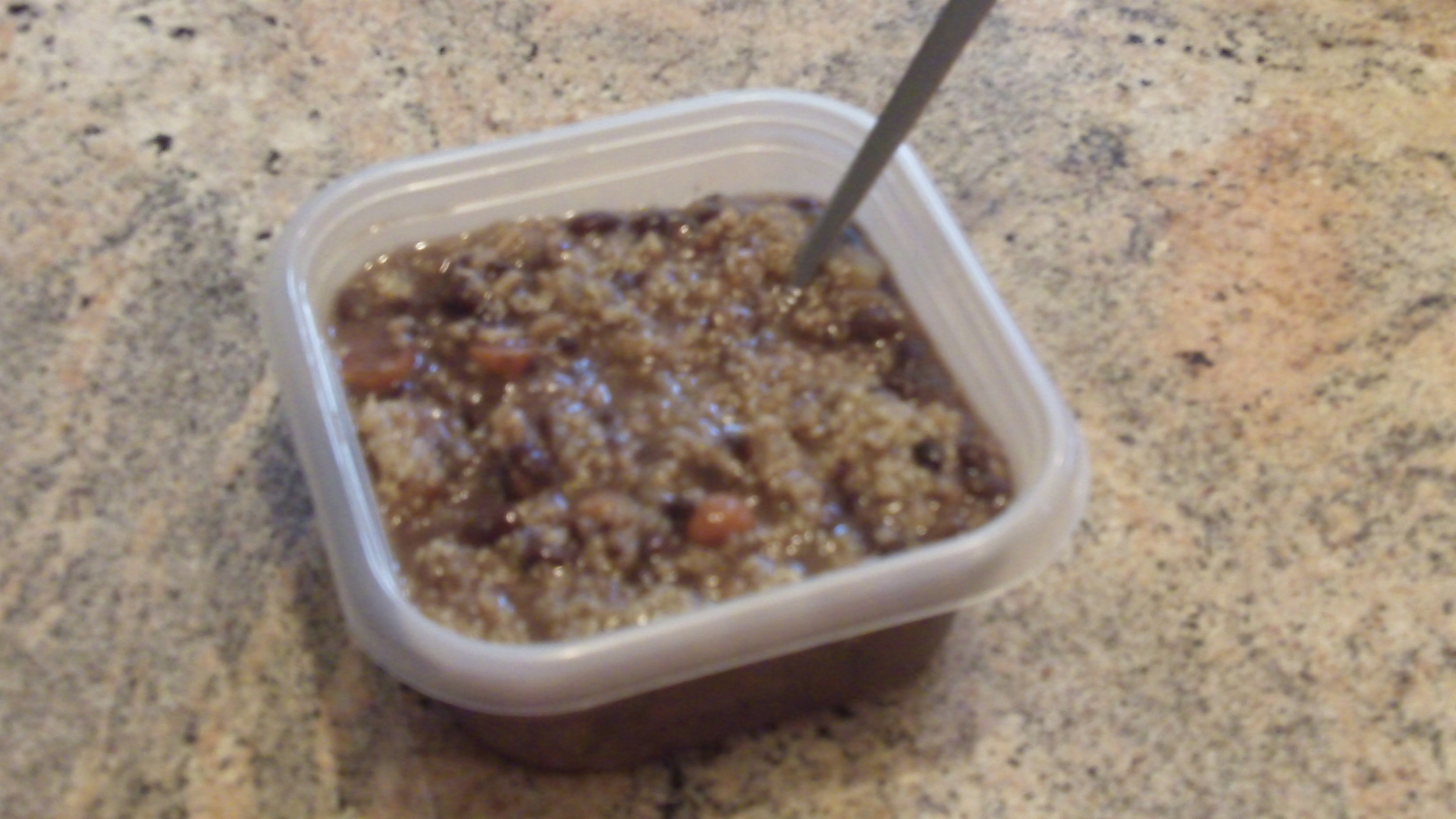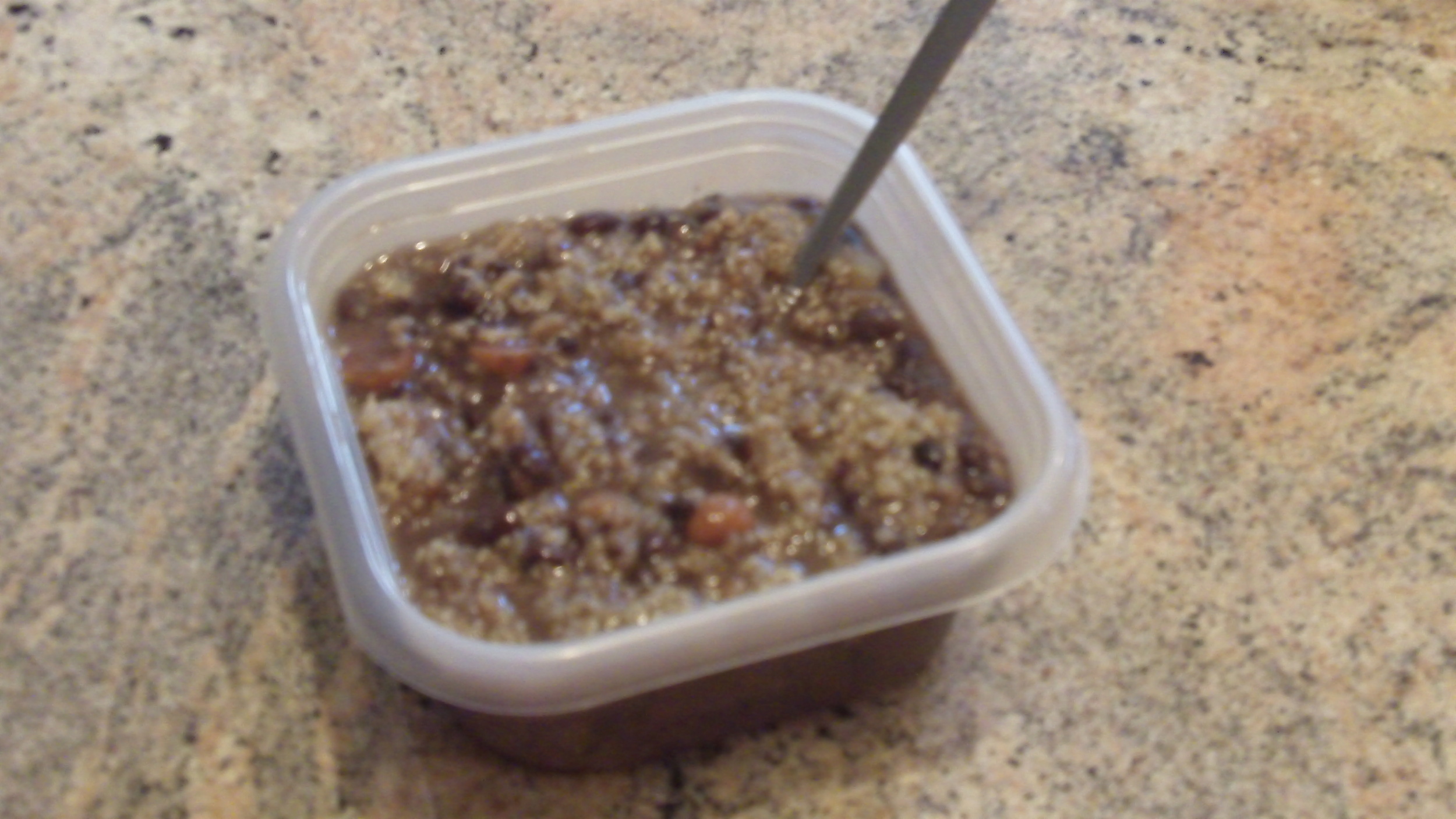Avoid Fatigue, Improve Your Sleep, & Manage Body Weight
By being aware of two things – 1. That your body has a pH, and, 2. That you should be striving to achieve pH balance – will help your body to avoid and manage stress more effectively while helping you to stay full of energy, have restful nights sleep, and manage your weight.When an acidic environment is sustained in the body (via diet and external stressors), health is affected as deep as the cellular level. Once this becomes the “norm” for your body, daily fatigue will exist. And because an acidic environment is a stressor in and of itself, cortisol levels will then rise and that will impair sleep patterns… so, now you’re fatigued from a poor diet and can’t even get a good night’s sleep. And if all this weren’t enough reasons to make a change, here’s the long-term bad news: acidic diets/bodily environments play a huge roll in America’s obesity problem AND will basically open the door and usher in disease into your body!
What should you do to improve your body’s pH profile? Take a look at this chart and start eating lots of foods from the alkaline-forming columns while making an effort to minimize/reduce/balance-out the acid-forming columns.
Highly Alkaline-Forming
Alkaline-Forming
Neutral
Slightly Acid-Forming
Highly Acid-Forming
Asparagus
Squash
Flax seed
Adzuki beans
Commercial breakfast cereal
Beets
Sweet potatoes
Hemp seed
Black beans
Pasta
Bell peppers
Amaranth
White chia seed
Black-eyed peas
Refined wheat flour
Broccoli
Buckwheat
Coconut oil
Chickpeas
White rice
Carrots
Millet
Macadamia nuts
Lentils
Beef
Cauliflower
Quinoa
Walnuts
Pumpkin seeds
Pork
Celery
Wild rice
Buckwheat flour
Sunflower seeds
Poultry
Chicory
Sesame
Agave Nectar
Brown rice
Shellfish
Cucumbers
Apples
Dried Herbs
Oats
Butter
Dill
Avocados
Miso paste
Spelt
Cheese (all types)
Dulse
Bananas
Spices
Chickpea flour
Cream
Green beans
Berries
Hemp flour
Milk, pasteurized
Leeks
Cantaloupe
Cold-water fish
Artificial sweeteners
Mixed Greens
Cherries
Venison
White sugar
Onion
Dates, Figs
Wild game
Candy
Parsley
Grapes
Milk, raw, unprocessed
Coffee
Peas
Nectarines
Synthetic multivitamins
Margarine
Sea Vegetables
Oranges
Peanuts (roasted)
Zucchini
Peaches
Prescription drugs
Stevia
Pears
Soft drinks
Gingerroot
Persimmons
Soy protein isolate
Green tea
Pineapple
Whey protein isolate
Fresh herbs
Pomegranates
Rooibos
Flax Oil
Yerba mate
Hemp Oil
Pumpkin Seeds
Almonds
Coconut
Peaches
I’ll leave you with a bit of – as a professor of mine always said – “Cocktail Trivia” - Did you know that it is impossible for cancer to form in an alkaline environment? Think about it.
I'm Ready to Admit a Few Things
I wanted to give an update to my plant-based dietary efforts this week and also thought there were a couple other things on my mind worth acknowledging/admitting to. Thank goodness people tend to become wiser as they get older…
- Plant-based diets do not make you stronger, that’s for sure. BUT, they do keep you healthy and help you maintain a healthy body-weight. I’ve been eating a plant-based diet for about 18 or 19 months now. I won’t call myself a vegan or a vegetarian as that’s not completely accurate, but I will tell you that I consume animal products (dairy, meat, poultry, pork, etc.) only about 2% of the time. Here is what I’ve learned:
- Plant-based diets always get big criticism for their cost, well, let me tell you we spend about 35% less at the grocery store each week than we used to. When you’re not buying family packs of chicken breasts each week, plus all the other animal protein products, your grocery bill takes a nose-dive. We used to spend around $100/week on groceries and now we average between $50-70/week.
- I eat copious amounts of carbohydrates and maintain a lower body weight than I have in about 10 years. Read into the details there however you want, but I have zero cravings as compared to the way I used to eat (high protein, moderate fat, low/moderate carbohydrate).
- I’m reducing my risk of a variety of diseases – cancer being the most notable. Cancer risk has been (via credible research) linked to the consumption of animal products, especially dairy. The cancer reason is 100% why I started this endeavor in the first place as cancer has left its mark on my family.
- You can also reduce your risk of a variety of diseases by eating lots of plants and lean meats.
- Here’s the biggie: MY STRENGTH LEVELS ARE NOTABLY LOWER than they were before I embraced this dietary lifestyle. Initially, I thought this was a pregnancy by-product issue, but Arabella is now 16-months old, so clearly, that’s no longer the problem. Don’t get me wrong, I haven’t morphed into a weakling, I am usually the strongest female in any room (unless Kelsey is around…), just not by such a large margin anymore! Honestly, I’m not surprised I haven’t been able to gain strength, but I am shocked I haven't been able to come close to achieving pre-pregnancy strength levels.
- Speed squats and/or speed deadlifts triumph over Olympic lifts each and every day of the week in terms of the MOST efficient way to improve explosiveness and strength (I feel like I preach this at least once a week). But, if you consider yourself a strength coach, you better have an excellent knowledge base about how to implement all aspects of strength-speed training – and this includes the Olympic lifts.
- In the past (thankfully, this is years in the past) I may have been overheard saying something to the effect of “I don’t get it why parents always use their kids as an excuse for not getting to workout. Just commit the time.” And I guarantee whatever variation of this statement I actually used would have been laced with some pretty heavy cynicism. But, I will now admit – as a parent myself – that fitting training into the details of every day is quite a challenge. But, I often remind myself that while I'm training for a lot of personal goals, I'm also training to set an example for my daughter. I want her to see that training is an essential and healthy part of being a responsible adult and something I want her to learn to embrace over time. So, if you’re a parent who fits training into their daily or weekly routine, give yourself a pat on the back!
Rely on Strategies, Not Willpower, Part 2
In Part 1, we discussed how a major key to success in fueling our bodies with good foods is to rely on strategies. A good plan of action will trump willpower, every time.
While there are many strategies one can use, I'm going to give you seven right here and now. Aren't I awesome?? Let's get right to it:
1. Hold Yourself Accountable.
If things are looking pretty dire, holding yourself accountable to someone may be exactly the kick in the pants you need. I recently wrote about this in detail HERE, so no need to elaborate much for the moment.
2. Pre-chop Your Vegetables.
Pretty self-explanatory, yet astonishingly effective. This blew my socks off when I first tried it and saw how effective it was. I don't know about you, but I find it rather annoying to cut veggies (especially those large broccoli bushes) . This being the case, it's guaranteed I'm not going to chop them when I arrive home, tired and hungry, from work at 9pm. However, if I've already chopped them, then they're all ready to go to throw on a frying pan, into a pot, or whatever. Tossing in a generous portion of herbs and spices will make them actually taste good, too.
On a Saturday or Sunday, simply take a bit of time to chop of a ton of veggies. Onions, peppers, carrots, squash, you name it. Then you can either divide them into separate containers, or just mix them all into one. This makes it a piece of cake to intake plenty of vegetables throughout the week. A personal favorite of mine is to keep a container of sliced bell peppers (various colors), and sliced onions to throw on the frying pan in the morning for egg omelets.
3. Always Have a (Nutritious) Meal Handy.
This takes a bit of planning, but will really help those random bouts of hunger that suddenly hit you. A recent favorite of mine has been to mix chopped carrots, beans, chick peas, asparagus, brussels sprouts, and canned chicken in a big baking dish:
Douse the dish with spices (I use cumin, chili powder, and garlic powder), mix in olive oil, and then top with some honey-flavored goat cheese (*the magic maker*) and bake in the oven for thirty minutes or so. I'll then divide up the dish into a bunch of tupperware containers to use on an as-needed basis.
It tastes better than it may sound, and is going to get you much closer to fitting into those skinny jeans than a bagel will.
4. Make Smoothies.
I have at least one of these every day. Super easy to make, and you can toss virtually anything in them. Not to mention, they're a great way to satisfy a sweets craving. Take them with you to work on a car trip and you're good to go. See the video below for one of my favorite recipes. If you have a cat to help you (like I did), even better:
5. Eat a Good Breakfast.
While scientists and dietitians may debate on which meal of the day is really the most important, I'm convinced that what you eat for breakfast will set the tone for the rest of the day. Simply put: If you gobble down a quick bowl of sugary cereal on your way out the door, then you're more than likely going to crave other sugary foods and sweets throughout the remainder of the day. Conversely, if you fuel your body with some lean proteins and healthy fats, then you'll be less prone to cave in to "problem foods" later in the day.
6. Give the Inside of Your Cupboards a Makeover.
If it's in your home, you're going to eat it. Plain and simple.
As such, if you have any "kryptonite" foods (you know what I'm talking about) that you tend to binge on for comfort, throw them away. If it's not in your home, you can't eat it.
7. Plan to Break the Rules 10% of the Time.
This is a staple guideline of John Berardi's Precision Nutrition system. Oftentimes, aiming for 90% compliance will get you much further than aiming for 100% compliance. When we shoot for perfection, we tend to enter a fail-->guilt-->fail-->guilt-->fail further-->guilt cycle that spirals us down to a place worse than where we started.
Achieving 90% adherence to a good plan will still deliver outstanding results, while still allowing ourselves not to be miserable. Going out for a special dinner? Get dessert and don't feel guilty about it. Ate well throughout the week and hit some benchmarks at work? Grab a burger and beer with your buds on Friday and enjoy it.
Just keep in mind what 90% really is. If you eat six times a day (42 feedings a week), this means that 38 of those 42 feeding opportunities can't contain crap. Or, if you eat three times a day (21 meals a week) then that leaves you only two, yes two, opportunities to indulge.
Most people think that they're at 90%, when really, after doing the math, they're only at 80% or so. I remember Rachel Cosgrove saying (paraphrased) that getting from 80% to 90% is one of the toughest barriers to break, yet also the biggest difference-maker when it comes to body composition and health.
Well, there you have it. Athletes can use the above tips to ensure optimal performance on game day and speedy recovery between training sessions. Everyone else can use them to feel better and keep body composition in check. Now get to it! After all, information without action is merely entertainment.
Rely on Strategies, Not Willpower, Part 1
It seems that people are often under the impression that I'm a sort of fearless and incorruptible freedom fighter when it comes to eating healthy and staving off temptation in the food realm. In fact, when I worked in the physical therapy clinic, all the therapists even brought in hard-boiled eggs and/or veggie+fruit platters for my birthday (instead of the typical cake+brownie+muffin celebratory nibbles). This meant a lot to me, as not only did they think of me on my birthday, but it showed that they knew it would mean more to me to eat snacks that "do the body good" than the usual birthday foods. I've been asked on many occasion - be it throughout college, out at dinner, or at the workplace - how I consistently eat well. How I always seem to pack healthy lunches, snacks, and at the same time avoid the belly-busting items on restaurant menus.
How do you DO it?
Man, I wish I could do that....
Wow, you have such great self-control!
I want your babies.
But the point of this post isn't to gloat. In fact, it's the exact opposite.
You want to know a deep, dark secret of mine? A skeleton in my closet, so to speak? I do NOT have the best self-control when it comes to food. In fact, it's terrible. Absolutely terrible. In reality, my sweet tooth is larger than the state of Kansas, and it is absolutely no sweat for me to crush a garbage disposal in a race to demolish a pint of ice cream. Not kidding. (To those that know me well, I know this doesn't come as a surprise).
However, despite this sad truth, I do still manage to fuel my body with foods that will benefit it rather than destroy it, the majority of the time. And my struggles to prove victorious in this area can help you.
I don't think any of you reading will deny that whole, unprocessed foods and vegetables will provide our bodies with steady doses of energy, allow us to recover faster from lifting sessions or athletic competitions, boost our immune systems, and keep body fat stores at bay. Nonetheless, many of us fail to act on this truth on a daily basis, right? Why?
Why is that, on a given weekend, we can plan to eat healthy throughout the upcoming week, only to find ourselves having consumed more oreos than antioxidants at the end of the week? I'll tell you why. The answer came to me when I was attending a business seminar put on by Alwyn and Rachel Cosgrove. Rachel, while discussing client adherence to nutrition and exercise plans, said something I'll never forget:
Rely on Strategies, Not Willpower.
So true. I mean, how many times throughout the week are we hit with unexpected events that cause to gravitate toward shoving crap down our pie holes? Whether it's being held up at the office for an extra hour (or three), unexpectedly needing to pick up your child at a soccer game, running a few extra errands, getting stuck in obscene traffic (for those that live in NOVA), or saving a vulnerable, homeless kitten from the perils of the wild (if you happen to be a SAPT strength coach), there's no doubt that numerous events can knock us off track.
Countless stressors and time-consuming events are GOING to happen that will tempt you to make a poor decision in the kitchen, and relying on willpower isn't the answer. Willpower is just too fragile for us mere mortals in the crowd. Instead, we need strategies. Strategies are the key to success.
Not to leave you hanging, but I need to stop here. I'm out of time, so I'm going to touch a few critical strategies on Wednesday. Plus, I'm over 600 words for this post so I may have already lost some of you anyway :) Until then, start thinking of some strategies YOU can use - be it related to your nutrition OR training - that can take you where you know you need to go.
Black Bean Poop…it’s delicious…
Not only is my wife drop-dead gorgeous (points), but she’s a terrific cook (double points…take notes boys). One of her specialties, and a meal my taste buds and colon love dearly, is her version of “Black Bean Soup,” which I prefer to call Black Bean Poop…I’m sure you can deduce why. It’s both nutritious and delicious…I mean it’s so good it almost tastes bad for you…plus it’s an extremely versatile meal, and it’ll last you a long time. The recipe: (serves a bunch, you’ll have leftovers which is awesome)
Food prep:
-Open 3-4 cans of black beans; a standard can, not the Costco barrels
-A generous couple handfuls of chopped carrots
-1/2 of a white onion, chopped into fairly fine bits
The cooking:
In a deep soup pan, begin by sautéing your carrots and onions in olive oil (enough to coat the bottom of pan) until soft. Once soft, add minced garlic (garlic lovers can be generous), and saute for a bit longer; careful not to burn the garlic.
Next, add 1 tbsp of cumin, a few generous shakes of cayenne (good cooks don’t measure, duh, and I like mine spicy), 3/4 tsp coriander, 32 oz. beef broth and the 3-4 cans of black beans (juice included). Stir it all up and let simmer for 15-20min.
Stroll to television and witness the Sox continuing to choke away the wildcard…make a u-turn back into the kitchen.
We like to serve our black bean poop on a bed of quinoa. See quinoa label for cooking instructions.
After the soup has simmered for about 15-20min, take your hand blender and gently blend until you’ve reached your desired soupy consistency; I like mine chunky. After blending, add ½ cup of dry sherry, and stir it up.
Take your quinoa off the stove, mix the two together, and enjoy!
What’s great is that later in the week your leftovers can be used to make bean burritos; add some fresh slices of avocado and a sprinkling of cheese…and now you’re eatin’ gooood.
The cure for the common case of constipation,
Sous Chef Chris
Packing a Nutritional Punch
These are my current Top 5 foods that are constantly in rotation in my diet (a diet that also includes a healthy dose of "greens" each and every day). Take a look, hopefully you'll be inspired to try something new and at the very least be reminded that with all the time I/we spend splitting hairs about proper warm-up protocols or speed squats vs. cleans, in the end, if you're diet isn't supporting your training those discussions end up being moot.
- Nutritional Yeast: Probably the least appealing name possible, but it is hands-down my number one dietary addition. Nutritional yeast is very light and flaky and tastes like mild cheddar cheese - melts like cheese, too. Anyway, nutritional yeast is a single-cell fungus that is grown on molasses (yum…). It is a complete protein and is prized for its vitamin B12 content (B12 is scarce in the plant kingdom). Finally, nutritional yeast is not active like baking yeast, so those who have issues consuming traditional yeast usually tolerate this magic powder without any trouble.
- Avocado: wide ranging anti-inflammatory benefits, increased absorption of carotenoids, supports cardiovascular health, helps regulate blood sugar, and preliminary research supports the avocado’s role in cancer fighting. So, eat some.
- Sweet Potato: overflowing with antioxidents, anti-inflammatory properties, and helps to regulate blood sugar. If you want the full benefit of the beta-carotene in the sweet potato then you should pair it with some fat to improve the absorption rate.
- Coconut Oil: made by pressing the fiber out of the meat of the coconut, this is one of the few oils that can be heated to high temperatures without converting to trans fat. Coconut oil is near tasteless (so it’s not like you’re eating a coconut everytime you cook with it) and is rich in MCT’s (bonus!). MCT’s – medium-chain triglycerides – are very easy on the digestive system and within moments of being consumed shoot right to the liver to be used as energy. Coconut oil is the fat of choice for those who want to achieve or maintain a lean physique.
- Super Protein Powder Blend: That is my name for combining rice (tryptophan) and pea (lysine) proteins with a little bit of hemp (leucine, isoleucine, and valine + edestin) protein. With this combo you can achieve a balanced amino acid profile in what is called a “flatline profile.” This simply means that the amino acids are being combined properly in a way that is complimentary and is providing a “broad-spectrum source of protein.” In fact, this combination is so perfect that it is actually structured better than any single protein source can ever be.
Sweet-Potato Pasta (+ Protein Shake)
Pasta – amount? Whatever floats your carbo-boat for the moment
1 Sweet Potato
1-2 Tbsp olive oil or coconut oil
2 Tbsp Nutritional Yeast
Sea Salt to Taste
Pretty simple: prepare your pasta of choice (I tend to use brown rice pasta) and bake or microwave a sweet potato. Slice the sweet potato and add to the pasta. Then add nutritional yeast, oil, and sea salt (optional).
I’ve actually added avocado to this in the past and was A-MAZing.
Pair this with a protein shake on the side and you’ve got yourself a powerful meal.













